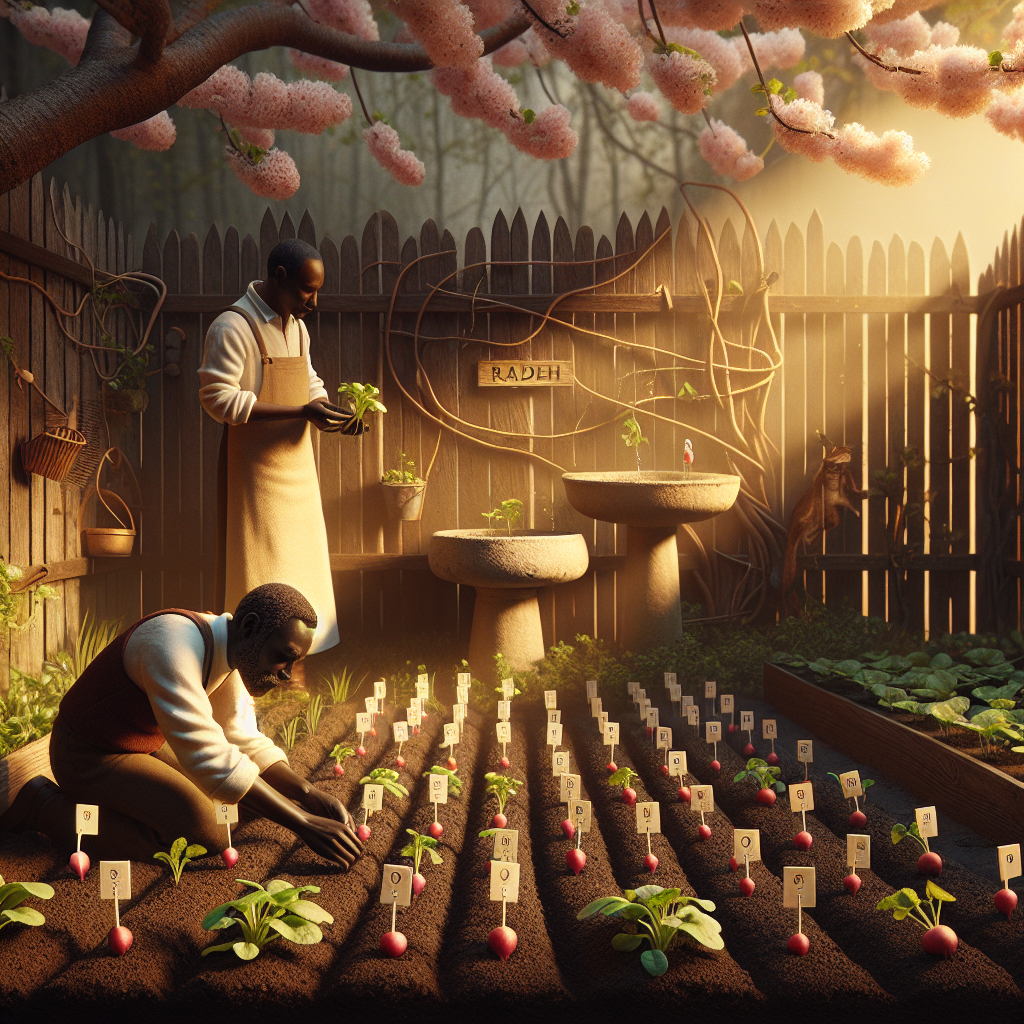Mastering the Art of Growing Radishes in your Home Garden
Radishes are a delightful addition to any home garden. Known for their vibrant colors, crisp texture, and peppery flavor, radishes can be a versatile ingredient in various dishes. Whether you are an experienced gardener or a novice looking to try your hand at growing vegetables, radishes are an excellent option to start with. In this article, we will explore the art of growing radishes in your home garden and provide you with some valuable tips to ensure a successful harvest.
Selecting the Right Radish Variety:
Before getting started, it is important to choose the right radish variety that suits your preferences and growing conditions. Radishes come in different shapes, sizes, and colors. Some common varieties include Cherry Belle, French Breakfast, Easter Egg, and Watermelon Radish.
Cherry Belle is a classic round red radish that matures quickly and thrives in most climates. French Breakfast has an elongated shape with red tops and white bottoms. It has a mildly spicy flavor and can tolerate cooler temperatures.
Easter Egg radishes are known for their vibrant assortment of colors including pink, purple, red, and white. They have a milder taste compared to other varieties.
Watermelon Radish is an intriguing variety that resembles its namesake with its green exterior turning into a bright pink interior. It has a slightly sweet flavor and adds both color and taste to salads.
Preparing the Soil:
Radishes prefer well-drained soil that is loose, fertile, and rich in organic matter. Before planting radish seeds, it is essential to prepare the soil adequately. Start by removing any weeds or grass from the planting area.
Loosen the soil using a garden fork or tiller to improve drainage and break up any compacted areas. Incorporate compost or well-rotted manure into the soil to provide additional nutrients.
Sowing Radish Seeds:
Radishes are generally grown from seeds since they are quick to germinate and mature. Sow the seeds directly into the prepared soil, ensuring a spacing of about 1 inch between each seed. Plant them at a depth of half an inch to one inch.
If you want a continuous harvest, sow radish seeds every two weeks throughout the growing season. This staggered planting will allow you to enjoy fresh radishes over an extended period.
Caring for Radish Plants:
Radishes require regular care and attention to ensure healthy growth and optimal development. Here are some important tips:

Watering: Keep the soil consistently moist but avoid overwatering, as it can lead to rotting or cracking of radish roots. Water deeply once or twice a week, depending on your climate and rainfall.
Thinning: Once the radish seedlings have emerged, thin them out to provide enough space for proper root development. Space them at least 2 inches apart by gently pulling out the weakest seedlings.
Mulching: Apply a layer of organic mulch around the base of your radish plants to prevent weed growth and retain moisture in the soil.
Fertilization: Radishes generally do not require heavy fertilization if the soil is rich in organic matter. However, if your soil is lacking nutrients, apply a balanced fertilizer according to package instructions.
Pest and Disease Control:
Fortunately, radishes are relatively resistant to pests and diseases. However, some common issues that may arise include flea beetles, aphids, clubroot, or powdery mildew. Regularly inspect your plants for any signs of damage or infestation.
To control pests such as flea beetles or aphids, consider using organic insecticides or natural remedies like neem oil or soap spray. Additionally, practicing crop rotation can help prevent clubroot disease. If powdery mildew occurs, ensure good air circulation among plants by providing adequate spacing.
Harvesting Radishes:
Most radish varieties mature within 20 to 30 days, depending on the specific type. As they grow, monitor their progress by gently pulling out a few radishes to assess their size.
When the radishes have reached their desired size and color, grip the foliage near the root and gently pull them out of the soil. Radishes are best harvested young when they are still tender and not overly pungent.
Enjoying Radishes:
Now that you have successfully grown radishes in your home garden, it’s time to savor the fruits of your labor. Radishes can be enjoyed in various ways – added to salads for a crisp crunch, pickled for tangy flavors, or simply eaten fresh with a sprinkle of salt.
Their peppery taste also makes them a great addition to sandwiches or as a garnish for soups and stews. Get creative with radish recipes and explore their versatility in different culinary creations.
In conclusion, growing radishes in your home garden can be an exciting and rewarding experience. Just ensure you select the right variety, prepare the soil adequately, provide proper care and attention throughout their growth stages, and protect them from pests and diseases. With patience and diligence, you will soon master the art of growing radishes and enjoy a bountiful harvest of these vibrant vegetables.













